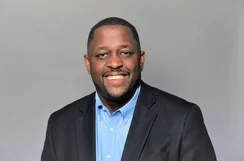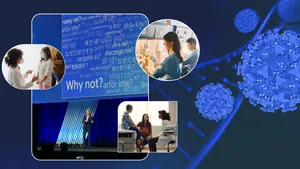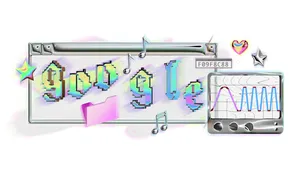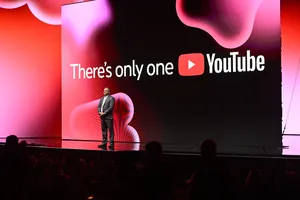How AI helps make public health truly public
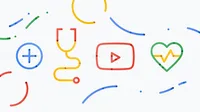
Artificial intelligence technology is rapidly changing medicine — for patients and practitioners alike. Not only does AI stand to be a powerful tool for improving health outcomes and advancing medical research, but it also promises to increase the quality, quantity and accessibility of health information.
Whether it’s to learn more about a symptom or to connect with a community on the same diagnosis journey, viewers around the world come to YouTube for a range of health and wellness content. Over the years, products like our health information and personal stories shelves make it easier for people to find and identify high-quality health content. Our goal is to make high-quality health information accessible to everyone.
AI is already an integral part of making these products work at scale, and there are even more opportunities to use it to make public health truly public. Here are three ways AI can make authoritative health content more prominent, create easier ways to share content in more languages and help health creators produce engaging content.
Elevating authoritative health content
AI has long powered YouTube’s search results and Watch Next panels, sifting through billions of videos to organize and recommend the most relevant content for viewers. When it comes to health information, it’s even more critical that our systems elevate content from authoritative sources.
We worked closely with organizations — such as the World Health Organization, the National Academy of Medicine and the National Health Service — to implement principles for raising credible sources of health information. These principles are incorporated into products so that people see locally relevant authoritative sources of health information more prominently in search results and can see video labels to know if content is from a licensed health professional or accredited institution. In select countries, medical professionals can apply for a health label so their content is eligible to be part of our authoritative health features.
Breaking language barriers with AI
As a global platform, we need to make sure that health information meets the language needs of people around the world. YouTube Health is collaborating with select health content creators to pilot a recently launched AI-powered dubbing tool, called Aloud, that makes the dubbing process easier, faster and at no additional cost to content creators. Dubbing is typically a costly and time-consuming process, but with this tool, AI can help unlock crucial health information that may otherwise be contained to a single language.
YouTube Health will work alongside clinicians to review translations, while making sure creators have ultimate control over their dubbed videos.
Empowering the global health creator community
Health creators must carefully balance how they can accurately convey evolving scientific information and the demand to make the content accessible and engaging. Currently, creators spend hours undertaking research, peer-reviewing information and generating scripts related to specific medical topics.
Recent advances in generative AI technologies, such as MedLM, our medically-tuned model developed by Google Research, can help support creators in their creative and information retrieval processes. YouTube Health is exploring the responsible use of AI tools to help creators produce high-quality and engaging health content.
We believe that the responsible implementation of AI can positively impact the health and wellbeing of billions. Through the use of generative AI, it is possible to scale high-quality, engaging and accurate health content across languages and geographies in a low-cost and time-efficient way.
Alongside the creator community and partners, we aim to continue on our mission of responsibly democratizing access to health information for all.
